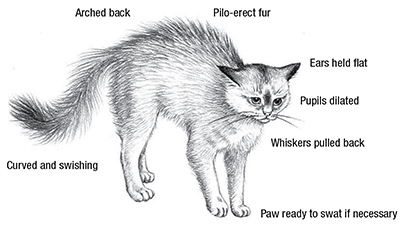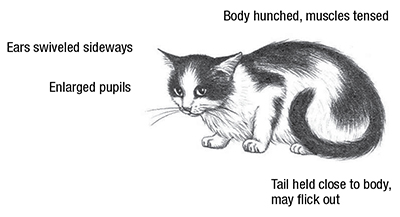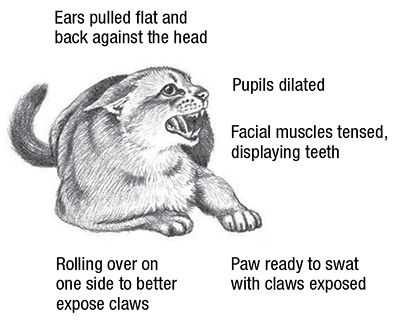
ASPCA Feline-ality Cat Body Postures

Distance-Increasing Behaviors
The goal of distance-increasing behaviors is to keep others from coming closer. Aggressive interactions are avoided when the warnings are heeded. Conflicted cats lack the confidence to stare down and charge others. Instead, they assume a defensive threat posture, warning others away by appearing as formidable as possible by arching their backs, swishing their tails, and standing sideways and as tall as possible. Fear and arousal causes their fur to stand on end (pilo-erection) and pupils to dilate.

The Anxious Cat
When a cat becomes anxious, he crouches into a ball, making himself appear smaller than usual. Muscles are tensed and the cat is poised to flee if necessary. The tail is held close to the body, sometimes wrapped around the feet. The head is held down and pulled into the shoulders.

Defensive Aggression
The pariah threat is another distance-reducing posture. When a cat determines that he cannot escape an unwanted interaction with a more dominant animal, he prepares to defend himself. The ears are pulled back and nearly flat against the head for protection and the head and neck are pulled in tight against the body. Facial muscles tense, displaying one weapon – the teeth. The cat rolls slightly over to one side in order to expose the rest of his arsenal – his claws. He is now ready to protect himself.
Copyright © 2013. The American Society for the Prevention of Cruelty to Animals (ASPCA). All Rights Reserved.


